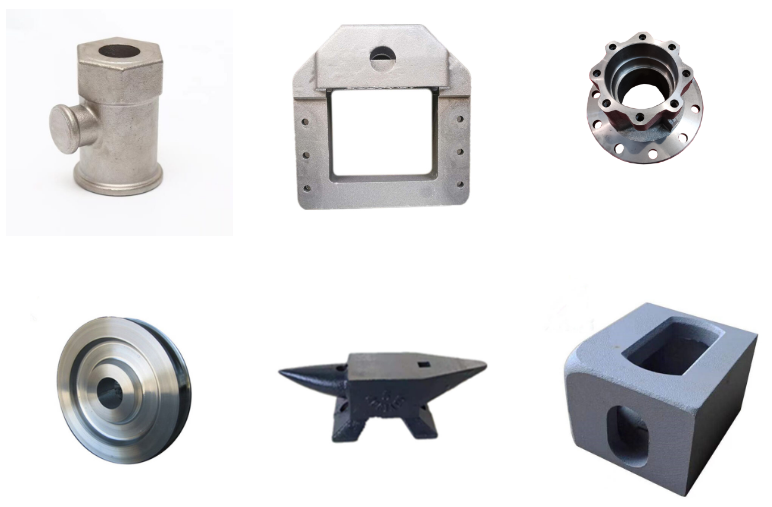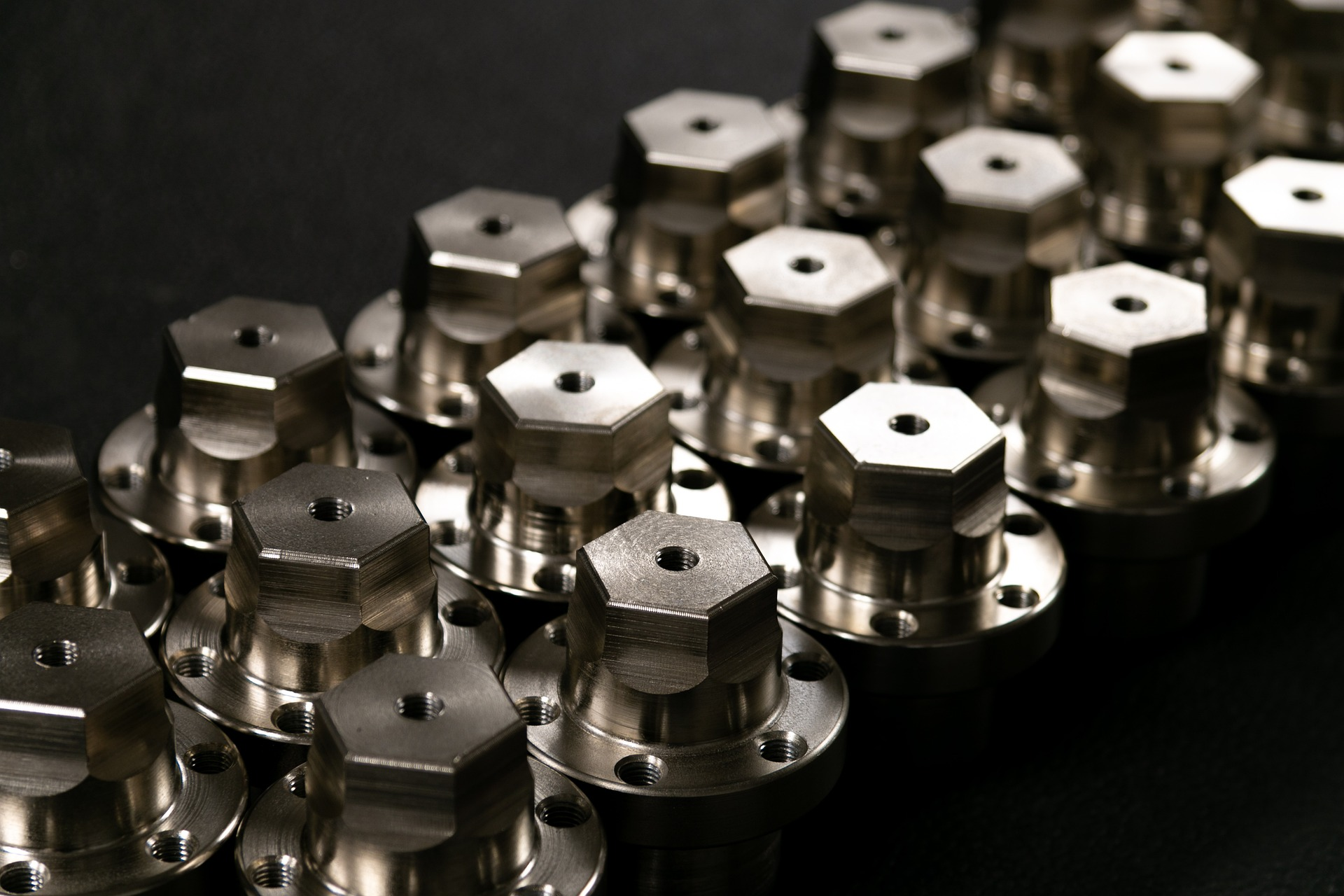Cast steel is an alloy made up of iron, carbon, and other elements. It is a versatile material that has many uses in a variety of industries, from construction to automotive manufacturing. It can be formed into many shapes and sizes and is often used in the production of machine parts. These are also called cast irons, malleable iron, gray iron, or ductile iron.
The properties and types of cast steel vary depending on the composition of the alloy and the manufacturing process used. This article will provide an overview of the types and properties of cast steel and how they are used in modern casting production.
Types of Steel Castings
Cast steel is a type of metal produced by melting different metals in a melting furnace and pouring the molten steel into a mold or cast, allowing it to solidify and take the shape of the mold. It is available in a variety of grades, each with its own excellent mechanical properties and characteristics that make it suitable for different applications.
Low Alloy Cast Steels
This type of steel alloy is produced when a small amount of alloying elements are added to the principal alloying element, which can be either carbon or another low alloy steel. Its various alloying elements include chromium, molybdenum, nickel, and vanadium, which results to corrosion resistant steel castings.
Low-alloy steels are made by combining different types of steel, such as carbon and manganese. These raw materials are combined to create a new alloy. This molten steel is then poured into a mold and cooled to create the desired shape. Its chemical composition can vary depending on the desired properties of the low alloy steel castings, such as strength, corrosion resistance, or wear resistance.
High alloy cast steel
High alloy steels are made up of iron, carbon, and other alloying elements. This type of steel is used in a variety of applications, from automotive parts to power generation equipment. These are strong and durable material that are also heat resistant steel castings, making it ideal for use in harsh environments.
Its high chromium and nickel content helps to protect the steel from oxidizing agents. High alloy steel castings are often used in the production of components that must stand up to extreme temperatures and harsh environments. This type of alloy steels are durable and can last for decades.
For example, high alloy cast steels are used in the manufacture of turbine blades, engine valves, and exhaust manifolds used in aircraft engines. It is also used in the manufacture of components in the automotive industry, such as exhaust manifolds, pistons, and cylinder heads.
Carbon steel

Carbon steel is one of the most common and widely used materials in the world. It is a type of alloy steels that is composed of iron and carbon.
While the exact amount of carbon in carbon cast steel varies, it is typically between 0.05 and 1.4 percent. The higher the carbon content, the harder and stronger the steel will be. The higher the carbon content, the less ductile the steel will be and it will be more susceptible to cracking and breaking.
Normal carbon steel is the most basic type and is composed of iron and carbon with no other elements. Low-carbon steel contains one or more additional alloying elements, such as manganese or silicon, and is used for specialty applications of cast iron. High-carbon steel is composed of several alloying elements and is used for high-strength applications.
Properties of Cast Steel
Cast steel is a type of steel that is created by pouring liquid steel into a mold. It is used in many applications and industries due to its malleability, strength, and high corrosion resistance. Cast steel has a variety of properties that make it an ideal material for a wide range of applications.
Tensile strength
Tensile strength is a measure of the steel castings’ ability to resist being pulled apart in tension. The tensile strength of cast steel is determined by its composition and manufacturing process.
The tensile properties of cast irons is determined by a variety of factors, including the type of alloy used, the carbon content, and the heat treatments used during manufacturing. Generally, cast steel has higher tensile strength than other metals, such as aluminum and titanium. This is due to its higher carbon content, which provides strength and hardness.
When considering using cast steel for an application, it is important to consider its tensile strength. Malleable iron and ductile iron are some of the metals that has a good casting performance when it comes to strength.
Maximum Hardness
The maximum hardness of cast steel is an important factor to consider when selecting the best steel for an application.
The hardness of cast steel can be measured in two ways: Brinell Hardness and Rockwell Hardness. Brinell Hardness measures the resistance of the metal to deformation under a specific load. Rockwell Hardness measures the surface hardness of the metal. The higher the number, the harder the steel, the better casting performance.
The hardness of cast steel can vary greatly depending on the steel compositions and the casting process used. Different types of steel, such as carbon steel, alloy steel, and stainless steel, can have different levels of hardness.
Additionally, different casting processes can result in different levels of hardness. For example, sand casting can produce soft steel due to the cooling rate of the sand, while investment casting can produce very hard steel due to the high temperature and pressure used during the process.
Corrosion Resistance
Alloying elements are added to cast steel to improve its corrosion resistance. Chromium and nickel are the most common alloying elements used in cast steel, as they form a protective layer on the surface of the steel, preventing further corrosion.
Additionally, heat treatment can be used to improve corrosion resistance, as it can change the microstructure and the distribution of alloying elements in the steel, resulting in excellent corrosion resistance.
Coating the steel with a protective layer such as zinc or a paint can also provide additional protection against corrosion. Additionally, surface treatments such as anodizing or galvanizing can be used to improve the corrosion resistance of the steel.
Melting Point
The melting point of cast steel is determined by its alloy composition. It can range from 1,400 to 2,400 degrees Fahrenheit, which is influenced by its alloy composition. The higher the carbon content, the higher the melting point. The addition of other elements, such as chromium, molybdenum, and vanadium, can also increase the melting point.
The melting point of cast steel is also used to determine its suitability for welding. The higher the melting point and heat resistance, the more difficult it is to weld the material. This is why it is important to choose the right type of cast steel for the application.
Fatigue Resistance
Fatigue resistance is a measure of a material’s ability to resist breakage when subjected to cyclic loading. It is determined by the number of cycles a material can withstand before it fails. Cast steel has an excellent fatigue resistance compared to other materials such as aluminum and brass.
This is mainly due to its high strength-to-weight ratio, which allows it to withstand the repeated stress of cyclic loading without failing. Different grades may have different levels of mechanical performance, so it is important to select the right grade for the application.
Benefits of Using a Steel Casting for Your Projects

Steel casting offers many advantages over other materials, making it a great choice for a wide range of applications. From increased strength to improved durability, there are many benefits of using steel casting.
Durability
Steel is a highly durable material that can withstand elevated temperatures and has a high level of tensile strength. It is also highly resistant to wear and tear, which makes it ideal for projects that require long-term use, like hydroelectric turbine wheels.
It can also provide a high level of quality. Steel castings are produced with precise detail and are tested to ensure that they meet the highest standards.
Versatility
Steel casting can also be used for a wide range of applications. It can be used to create everything from axle housings to automotive parts and components. This versatility makes it a great option for any kind of project.
These metals can withstand extreme temperatures and pressures, making it a great choice for projects that require strength and durability. Steel castings are also highly resistant to corrosion and rust, making them a great choice for projects that will be exposed to harsh environmental conditions.
Cost-Effective
One of the main reasons steel castings are so cost-effective is because they require fewer steps than many other manufacturing processes. With steel casting, all that’s required is to create a mold, pour in the liquid steel, and let it cool.
This streamlined process means there are fewer costs associated with labor, materials, and time. Additionally, the molds used in steel casting can be reused many times, further cutting down on costs.


